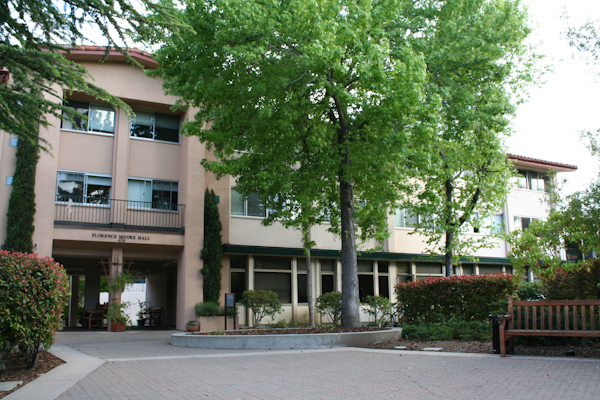As Stanford’s Structured Liberal Education (SLE) officially reaches its 50th anniversary, students and faculty said a through line in the program history’s is its core values of support and community.
SLE was founded by the late professor Mark Mancall in 1973 as a residential-based humanities program for frosh. The program will commemorate its success on Oct. 21 with a celebration inviting both current and former SLE students back to East FloMo.
“It’s a great honor to be partaking in something that has lasted this long. Three weeks in, it’s a very fun and transformative experience,” said Dan Kubota ’27, a current SLE resident.
Participating in SLE as a frosh fulfills Stanford’s core COLLEGE and PWR requirements, but it does more than get frosh out of required coursework, students said. Often referred to as ‘the liberal arts college experience’ at Stanford, about 90 students participate each year.
“It’s a residential-based class, so it’s genuinely a great community. I can go from lecture to dinner with my friends and tie what we’ve talked about in our lecture to our daily lives in a very organic manner, not in a forced way,” Kubota said.
SLE students take a chronologically structured three-quarter course that begins with teaching about the ancient world and culminates with the modern period, according to the program’s website. Each quarter, students take an eight-unit class, which is roughly equivalent to the coursework of two traditional classes.
Jeremy Sabol, the associate director of SLE for the past 20 years, said students build a strong sense of community among each other.
“Searching together after the common good and trying to learn together while living together is a really important part of SLE that makes it distinctive from other programs,” Sabol said. “SLE is dramatically different from other dorm experiences because the students are not only living together but undertaking this intellectual project together with the help of older classmen and SLE alums.”
SLE Resident Tutors (SLErts), who students said are comparable to resident assistants (RAs), allow this community to stay in touch, even after a student has completed their frosh year.
“The SLErt team helps foster community and belonging within SLE,” said Jas Wheeler ’25, a second-year SLErt. “We host study breaks with food and offer office hours to talk about essays and adjusting to Stanford. We offer social advice as well as academic advice.”
Wheeler is eager to attend the SLE 50th anniversary party this weekend, reflecting on it as a special milestone for the program.
Over the past week, SLE students celebrated a milestone of their own: turning in their first essays of the year. Wheeler and other SLErts hosted a study group as students prepared their essays about Homer’s “Odyssey.”
“My first essay was a rite of passage as a SLE student,” Wheeler said. “It’s fun to be on the other side and give advice this time.”
Kubota felt confident as she turned in her “SLEssay.” Adding “SLE” to the beginning of a word is a running joke in the SLE class, she said.
“We have so many SLE puns,” she joked. “SLEssay. Get enough SLEep. SLE you again. Let’s meet in the SLounge.”
This joke has also had hurtful uses too, Wheeler said, including the use of “SLoser” by other frosh.
“People get weirded out by SLE because it looks very intense and intimidating. They picture dark academia, walking around wearing tweed,” Wheeler said. “People underestimate how fun and casual it is. It’s an eight-unit class but it’s not as excruciating as it looks.”
Faculty are also trying to shake the slander surrounding SLE. Sabol said students who produce negative stereotypes on the SLE experience are usually not SLE students.
“That’s how stereotypes work,” Sabol said. “The people that spread them are the people who know the least about what they’re talking about.”
Sabol hopes SLE encourages students to “engage critically” with texts of the Western tradition to understand its impact and legacy. He emphasized the need to “not endorse or attack, but assess the readings they engage with.”
“Eighteen-year-olds generally have trouble with ambiguity. You tend to want wrong or right answers,” Sabol said. “The really exciting and productive questions and issues in the humanities don’t have right or wrong answers. People have different answers and they change over time.”
Wheeler and Kubota look forward to partaking in future SLE activities, including a play that will be performed at the end of the quarter.
“It’s cool SLE has lasted this long,” Kubota said. “It says something about the impact of the program. Things don’t just last 50 years for no reason. Something about SLE draws people to continue participating in it … SLE clearly has an impact on the community and Stanford.”
